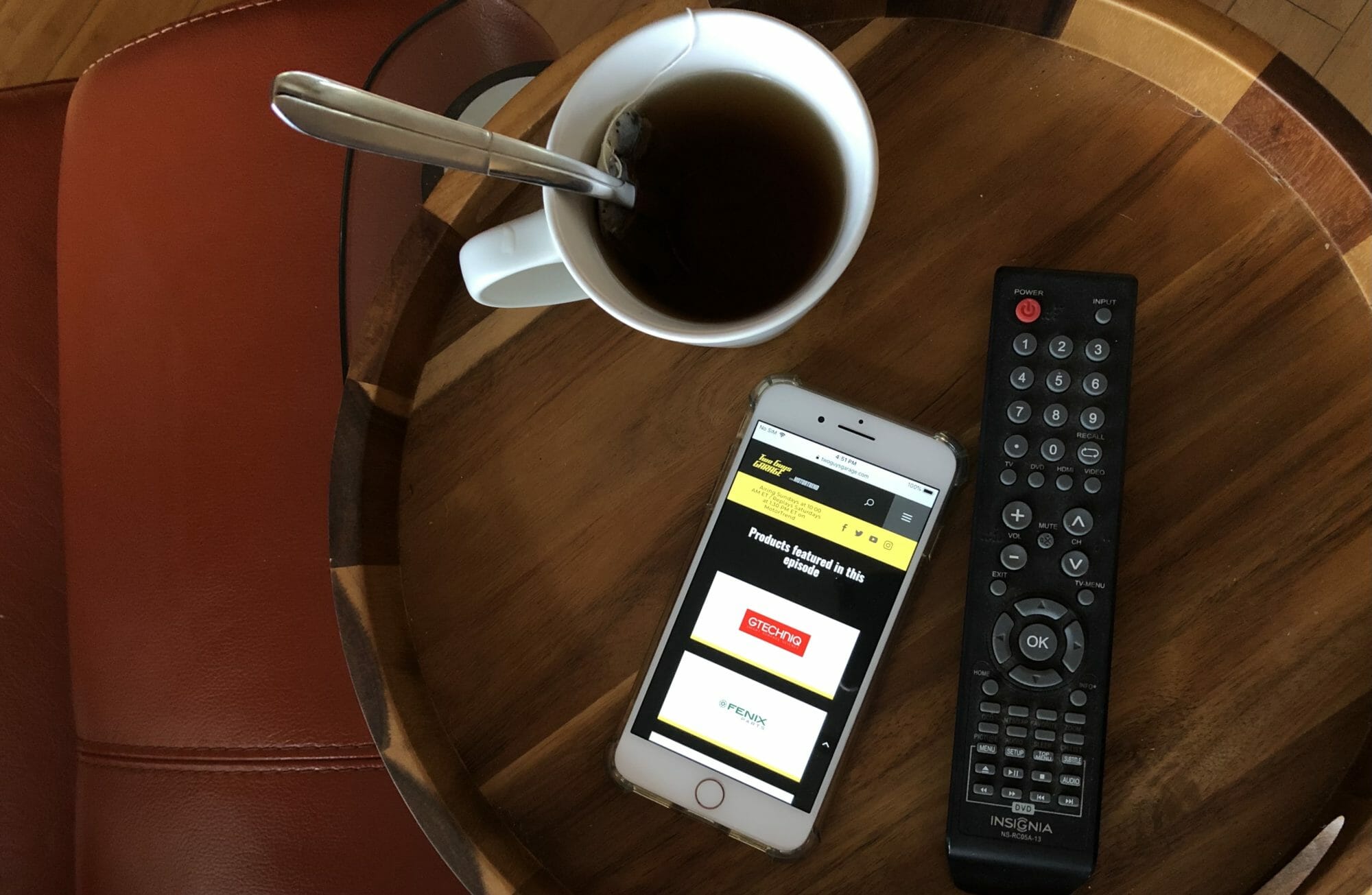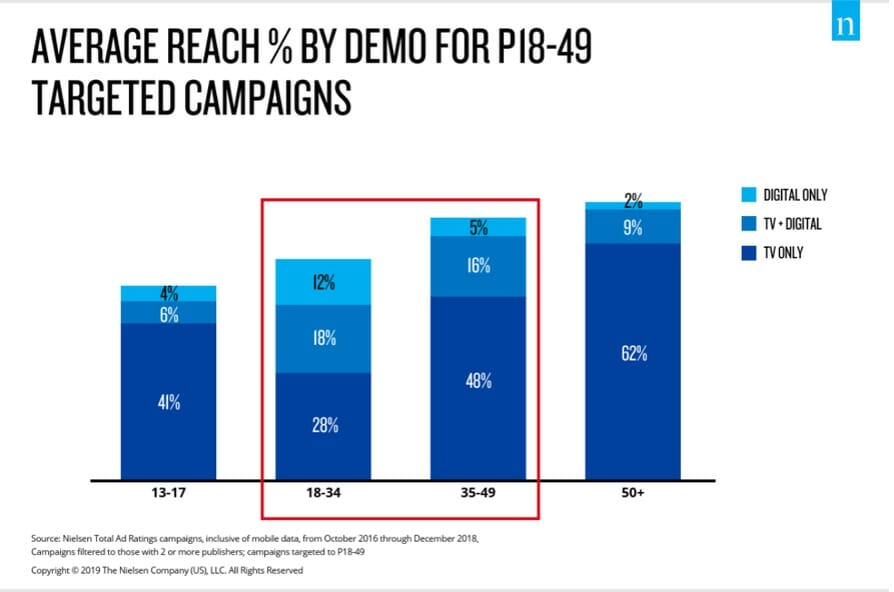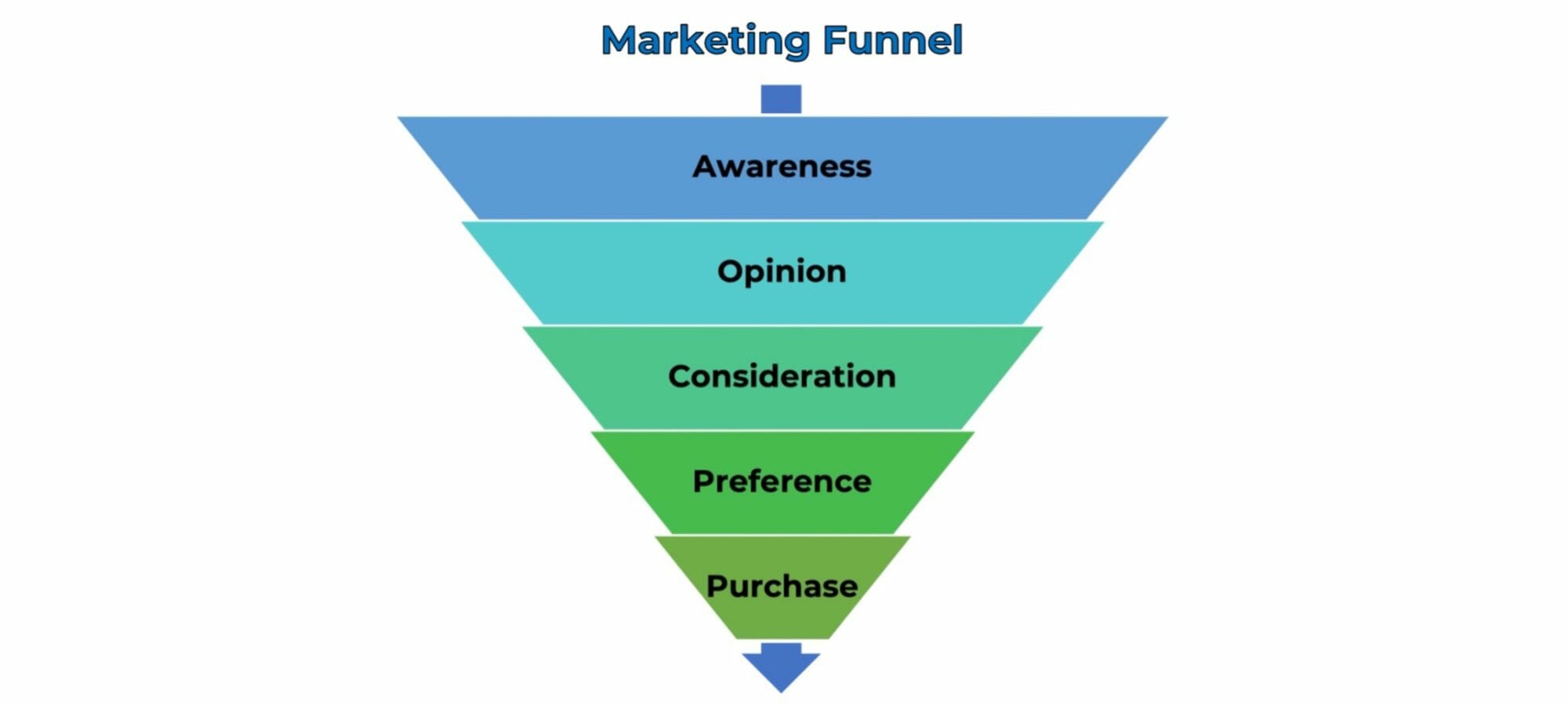TV and Digital: Better Together
Figuring out the best marketing and advertising strategy for your brand can get confusing – especially with an ever-increasing host of media options available.
If you don’t have the ad dollars or personnel bandwidth to spare on researching and experimenting with different types of media, it can be tempting to simply go with what seems like the least expensive or least risky option.
And if you’ve gotten comfortable over the years with an “if it ain’t broke, don’t fix it” method, you may be missing out on opportunities to reach new potential customers.

Whatever the reason, it can be tempting to take an “either/or” approach when considering how much of your marketing budget to allocate toward traditional media like TV, or social media like Facebook and Instagram. But a recent Nielsen study of cross-platform ad campaigns found that combining your digital ad spend with a TV campaign is a better strategy than focusing all your budget on just one or the other.
Why Combine TV and Digital?
Even though we now have more media platforms than ever vying for the public’s attention, TV is still the primary driver of audience reach. Nielsen’s study found that with adults 18-49, the average number of impressions from TV is nearly 8 times greater than impressions from digital campaigns. This suggests that if you’re only putting your ad dollars toward digital, you’re missing a pretty large percentage of your desired audience.
But more interestingly, Nielsen also found that combining TV and digital provides a significant boost to your audience reach. While TV-only campaigns reached 48% of adults 35-49, and digital-only campaigns reached 5%, combining TV and digital boosted that audience reach an additional 16%.

TV: Awareness, Authenticity, and Trust
In addition to boosting audience reach, TV provides authenticity and trust in your brand. In March 2021 Nielsen reported that for consumers, TV remains a leader of collective trust in advertising; 59% of adults 35-49 and 51% of adults 18-34 consider TV very or somewhat trustworthy.
In our experience at Brenton, we’ve found that integrating brands in episodes of our TV shows is effective because the audience members have already “opted in” to viewing the content. In our case with automotive TV, our network partner reaches a highly-targeted viewership; the audience members who watch our TV shows are automotive enthusiasts who tune in to get relevant information.

Already attentive and receptive to the content, our viewers are then engaged by trusted on-screen personalities who are influential members of the automotive enthusiast culture.
Digital: Exploration, Interaction, and Purchase
For an audience member who sees a brand on TV that sparks their interest, the natural next step is to learn more by searching for that brand online. Recent studies by Effectv and The VAB discovered that the average brand sees an immediate double-digit increase in unique visitors to their digital platforms during the month of their TV campaign launch. Brands also see a 15% lift in purchase intent when ads air on TV plus digital, compared to digital alone.
This is where a strategic digital campaign can pick up the baton for your TV campaign – further targeting your desired demographic, and providing opportunities for the viewer to interact directly with your brand, moving them closer to a purchasing decision.
By establishing a goal for your campaign (such as driving more traffic to your website) and identifying your target audience, you can create a digital content distribution plan that best serves your goals and the audience you’re trying to reach.

Knowing where and when to publish your content is extremely important. Since audiences tend to engage and react differently on each social media platform, a strong campaign strategy utilizes best practices for publishing times, days, and locations – all of which play an important role in getting your content in front of the right people and engaging them to take the next step in their customer journey.
While social media offers a wealth of options, control and flexibility, an effective digital campaign requires good strategy – especially when the goal is to reach beyond your organic fanbase. Common mistakes like failing to identify the correct target audience, not understanding which type of content to use in what setting, and improper budgeting, can result in wasted time and money. Bringing in an expert to help you create an effective campaign strategy is a great way to avoid these stumbling blocks.

Part of a successful strategy involves the quality of what you’re posting on digital platforms (not just the quantity). Keeping it real has never been more important than it is now. 8 out of 10 Americans are on social media and the average person has 8 or more social media accounts, through which they are consistently being served with various types, formats, and lengths of content. This means you can’t just copy-and-paste your content or strategy across multiple platforms and achieve successful results. An authentic voice and content strategy will yield much higher results, since fans tend to gravitate towards what’s relatable, aspirational, or educational.
TV + Digital: A Complete Campaign Strategy
Let’s break this down by looking at your brand’s marketing funnel. A good marketing strategy should cover each area of that funnel.

TV is highly effective at achieving goals like increasing brand awareness and helping a viewer reach an informed opinion. As the viewer moves toward product consideration, your digital campaign goes to work, finding that viewer at the right time and place to engage with your brand online, visit your website, and eventually reach the point of purchase. Combining TV and digital creates a complete strategy that reaches more of your intended audience and provides opportunities for interactive guidance toward a purchasing decision.
Want to find out more about how you can create an effective media strategy? Send us an email! We’d be happy to help you find creative and cost-effective solutions, whether you’re an experienced media buyer building a robust campaign, or you’re trying out branded content for the first time.
Subscribe

0 Comments